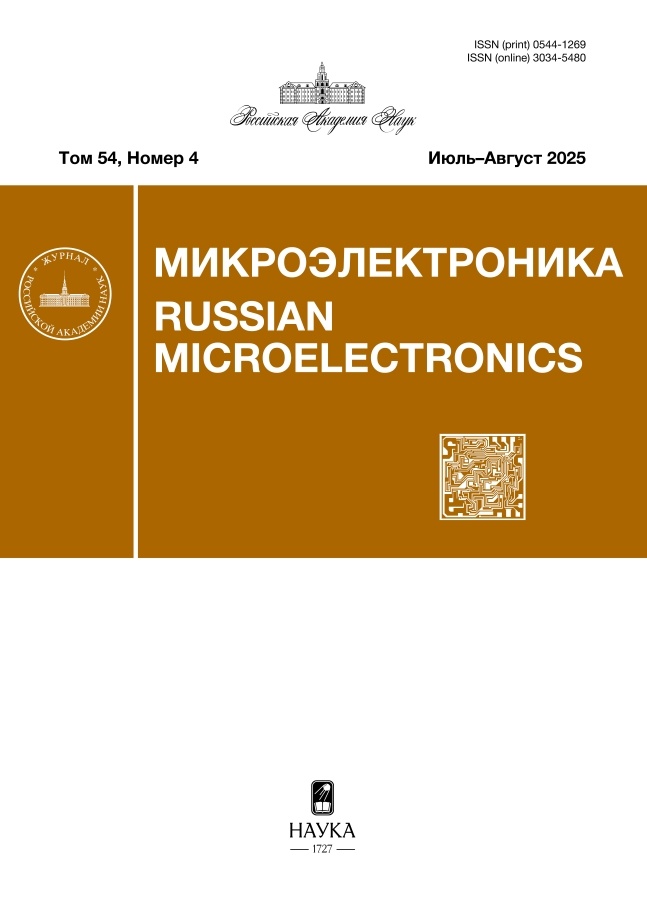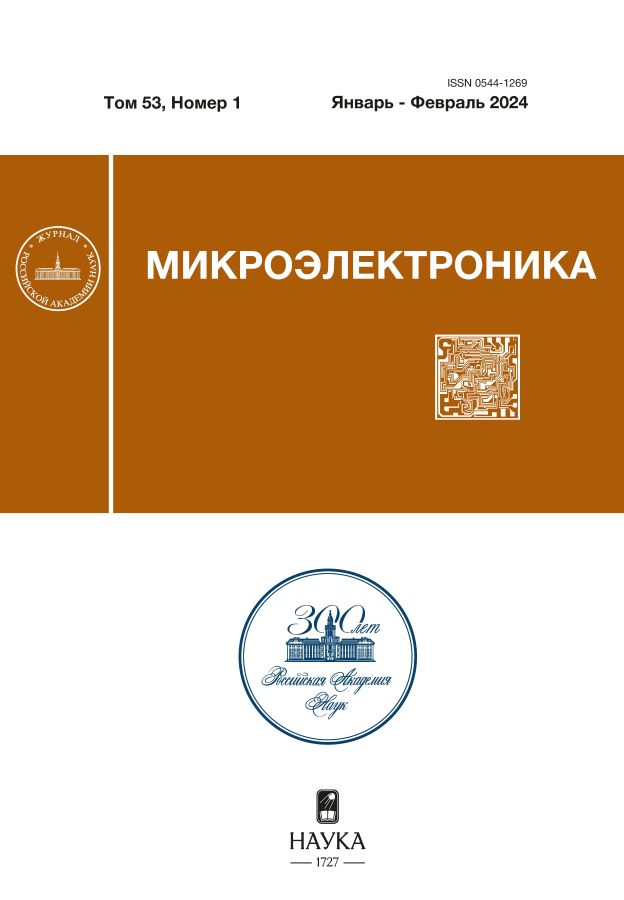Моделирование электронных свойств М-легированных суперъячеек Li4Ti5O12—М (М = Zr, Nb) с моноклинной структурой для литий-ионных аккумуляторов
- Авторы: Асадов М.М.1,2, Маммадова С.О.3,4, Мустафаева С.Н.3, Гусейнова С.С.3,4, Лукичев В.Ф.5
-
Учреждения:
- Институт катализа и неорганической химии им. М.Ф. Hагиева Министерство науки и образования Азербайджана
- Научно-исследовательский институт геотехнологических проблем нефти, газа и химии АГУНП
- Институт физики Министерства науки и образования Азербайджана
- Университет Хазар
- Физико-технологический институт им. К.А. Валиева Российской академии наук
- Выпуск: Том 53, № 1 (2024)
- Страницы: 39-50
- Раздел: МОДЕЛИРОВАНИЕ
- URL: https://rjpbr.com/0544-1269/article/view/655239
- DOI: https://doi.org/10.31857/S0544126924010041
- ID: 655239
Цитировать
Полный текст
Аннотация
Уточнена фазовая диаграмма T–x квазибинарной системы Li2O–TiO2 и построено изотермическое сечение тройной системы Li–Ti–O при 298 К. Определены равновесные фазовые области Li–Ti–O в твердом состоянии с участием граничных бинарных оксидов и четырех промежуточных тройных соединений , , и . Методом теории функционала плотности (DFT LSDA) рассчитаны энергии образования указанных тройных соединений системы Li2O–TiO2 и построена зависимость от состава.
Проведено ab initio моделирование суперъячеек на основе М-легированного анодного материала на основе соединения (LTO) с моноклинной структурой (m). Показано, что частичное замещение катионов и кислорода в структуре m-LTO–M повышает эффективность литий-ионного аккумулятора (LIB) как за счет стабилизации структуры, так и за счет увеличения скорости диффузии . За счет вклада d-орбиталей (Zr4+-4d, Nb3+-4d орбитали) в обменную энергию происходит частичная поляризация электронных состояний и увеличивается электронная проводимость m-LTO–M. Образование кислородных вакансий в кристаллической решетке m-LTO–M, как и в бинарных оксидах, может создавать донорные уровни и улучшать транспорт и электронов.
М-легирование структуры m-LTO путем замены катионов, в частности лития, на атомы Zr или Nb, заметно уменьшает ширину запрещенной зоны (Eg) суперячеек m-LTO–M. При этом в зонной структуре m-LTO–M уровень Ферми смещается в зону проводимости и запрещенная зона сужается. Уменьшение значения Eg увеличивает электронную и литий-ионную проводимость суперъячеек m-LTO–M.
Об авторах
М. М. Асадов
Институт катализа и неорганической химии им. М.Ф. Hагиева Министерство науки и образования Азербайджана; Научно-исследовательский институт геотехнологических проблем нефти, газа и химии АГУНП
Автор, ответственный за переписку.
Email: mirasadov@gmail.com
Азербайджан, Баку; Баку
С. О. Маммадова
Институт физики Министерства науки и образования Азербайджана; Университет Хазар
Email: mirasadov@gmail.com
Азербайджан, Баку; Баку
С. Н. Мустафаева
Институт физики Министерства науки и образования Азербайджана
Email: mirasadov@gmail.com
Азербайджан, Баку
С. С. Гусейнова
Институт физики Министерства науки и образования Азербайджана; Университет Хазар
Email: mirasadov@gmail.com
Азербайджан, Баку; Баку
В. Ф. Лукичев
Физико-технологический институт им. К.А. Валиева Российской академии наук
Email: lukichev@ftian.ru
Россия, Москва
Список литературы
- Reddy M.V., Subba Rao G.V., Chowdari B.V.R. Metal Oxides and Oxysalts as Anode Materials for Li Ion Batteries // Chemical Reviews. 2013. V. 113. No. 7. P. 5364–5457. https://doi.org/10.1021/cr3001884
- Tanaka S., Kitta M., Tamura T., Maeda Y., Akita T., Kohyama M. Atomic and electronic structures of Li4Ti5O12/Li7Ti5O12 (001) interfaces by first-principles calculations // J Mater Sci. 2014. https://doi.org/10.1007/s10853-014-8102-x
- Ikezawa A., Fukunishi G., Okajima T., Kitamura F., Suzuki K., Hirayama M., Kanno R., Arai H. Performance of Li4Ti5O12-based Reference Electrode for the Electrochemical Analysis of Allsolid-state Lithium-ion Batteries // Electrochemistry Communications. 2020. V. 116. Р. 106743. https://doi.org/10.1016/j.elecom.2020.106743
- Ziebarth B., Klinsmann M., Eckl T., Elsässer C. Lithium diffusion in the spinel phase Li4Ti5O12 and in the rocksalt phase Li7Ti5O12 of lithium titanate from first principles // Physical Review B. 2014. V. 89. No. 17. P. 174301–7. https://doi.org/10.1103/physrevb.89.174301
- Xu G., Han P., Dong S., Liu H., Cui G., Chen L. Li4Ti5O12-based energy conversion and storage systems: status and prospects // Coordination Chemistry Reviews. 2017. S0010854517301121. P. 1–158. https://doi.org/10.1016/j.ccr.2017.05.006
- Zhang H., Yang Y., Xu H., Wang L., LX., He X. Li4Ti5O12 spinel anode: Fundamentals and advances in rechargeable batteries // InfoMat. 2022. 4: e12228. P. 1–29. https://doi.org/10.1002/inf2.12228
- Asadov M.M., Mammadova S.O., Huseynova S.S., Mustafaeva S.N., Lukichev V.F. Simulation of the Adsorption and Diffusion of Lithium Atoms on Defective Graphene for a Li-Ion Battery // Russian Microelectronics. 2023. V. 52. No. 3. P. 167–185. https://doi.org/10.1134/S1063739723700336
- Zhao B., Ran R., Liu M., Shao Z. A comprehensive review of Li4Ti5O12 based electrodes for lithium-ion batteries: The latest advancements and future perspectives // Materials Science and Engineering R. 2015. V. 98. P. 1–71. https://doi.org/10.1016/j.mser.2015.10.001
- Asadov M.M., Mammadova S.O., Guseinova S.S., Mustafaeva S.N., Lukichev V.F. Ab initio calculation of the band structure and properties of modifications of the Ti3Sb compound doped with lithium // Physics of the Solid State. 2022. V. 64. No. 11. P. 1594–1609. https://doi.org/10.21883/PSS.2022.11.54179.395
- Asadov M.M., Mammadova S.O., Guseinova S.S., Mustafaeva S.N., Lukichev V.F. Modeling of Gold Adsorption by the Surface of Defect Graphene // Russian Microelectronics. 2022. V. 51. No. 6. P. 413–425. https://doi.org/10.1134/S1063739722700159
- Asadov M.M., Mammadova S.O., Guseinova S.S., Mustafaeva S.N., Lukichev V.F. Modeling structural and energy characteristics of atoms in a GaS2D-crystal with point defects // Physics of the Solid State. 2022. V. 64. No. 1. P. 44–57. https://doi.org/10.21883/PSS.2022.01.52487.182
- Kleykamp H. Phase equilibria in the Li—Ti—O system and physical properties of Li2TiO3 // Fusion Engineering and Design. 2002. V. 61–62. P. 361–366. https://doi.org/10.1016/s0920-3796(02)00120-5
- Okamoto H. Li-O (Lithium-Oxygen) // Journal of Phase Equilibria and Diffusion. 2013. V. 34. No. 2. P. 169. https://doi.org/ 10.1007/s11669-012-0182-1
- Okamoto H. O-Ti (Oxygen-Titanium) // Journal of Phase Equilibria and Diffusion. 2011. V. 32. No. 5. P. 473–474. https://doi.org/10.1007/s11669-011-9935-5
- Bale C.W. The Li-Ti (Lithium-Titanium system). Bulletin of Alloy Phase Diagrams. 1989. V. 10. No. 2. P. 135–138. https://doi.org/10.1007/bf02881424
- Asadov M.M., Kuli-zade E.S. Phase equilibria, thermodynamic analysis and electrical properties of the Li2O—Y2O3—B2O3 system // Journal of Alloys and Compounds. JALCOM (IF 4.650) Pub Date: 2020–05–23. https://doi.org/10.1016/j.jallcom.2020.155632
- https://next-gen.materialsproject.org/materials/mp-685194. mp-685194: Li4Ti5O12 (Monoclinic, C2/c, 15).
- Li X., Qu M., Yu Z. Structural and electrochemical performances of Li4Ti5–xZrxO12 as anode material for lithium-ion batteries // Journal of Alloys and Compounds. 2009. V. 487. No. 1–2. P. L12—L17. https://doi.org/110.1016/j.jallcom.2009.07.176
- Kim S.-K., Kwon E.-S., Kim T.-H., Moon J., Kim J. Effects of atmospheric Ti (III) reduction on Nb2O5-doped Li4Ti5O12 anode materials for lithium ion batteries. Ceramics International. 2014. V. 40. No. 6. P. 8869–8874. https://doi.org/10.1016/j.ceramint.2013.12.132
- Wang L., Zhang Y.M., Guo H.Y., Li J., Stach E.A., Tong X., Takeuchi E.S., Takeuchi K.J., Liu P., Marschilok A.C., Wong S.S. Structural and Electrochemical Characteristics of Ca-Doped “Flowerlike” Li4Ti5O12 Motifs as High-Rate Anode Materials for Lithium-Ion Batteries // Chem Mater. 2018. V. 30. No. 3. P. 671–684.
- Tsai P., Hsu W-D., Lin S. Atomistic Structure and Ab Initio Electrochemical Properties of Defect Spinel for Li Ion Batteries // Journal of the Electrochemical Society. 2014. V. 161. No. 3. A439—A444. https://doi.org/10.1149/2.095403jes
- Ouyang C.Y., Zhong Z.Y., Lei M.S. Ab initio studies of structural and electronic properties of spinel // Electrochemistry Communication. 2007. V. 9. No. 5. P. 1107–1112. https://doi.org/10.1016/j.elecom.2007.01.013
- Ding Z., Zhao L., Suo L., Jiao Y., Meng S., Hu Y-S., Wang Z., Chen L. Towards understanding the effects of carbon and nitrogen-doped carbon coating on the electrochemical performance of in lithium ion batteries: a combined experimental and theoretical study // Physical Chemistry Chemical Physics. 2011. V. 13. No. 33. P. 15127–15133. https://doi.org/10.1039/C1CP21513B
- Nguyen T.D.H., Pham H.D., Lin S.-Y., Lin M.-F. Featured properties of Li+-based battery anode: // RSC Advances. 2020. V. 10. No. 24. P. 14071–14079. https://doi.org/10.1039/D0RA00818D
- https://next-gen.materialsproject.org/materials/mp-772925: (Triclinic, P-1, 2) (materialsproject.org).
- Yeh J.-J., Lindau I. Atomic subshell photoionization cross sections and asymmetry parameters: 1≤Z≤103. 1985. V. 32. No. 1. P. 1–155. https://doi.org/10.1016/0092-640x(85)90016-6
- Yeh J.-J. Atomic Calculation of Photoionization Crosssection and Asymmetry Parameters. Gordon and Breach. New Jersey, 1993.
Дополнительные файлы


















